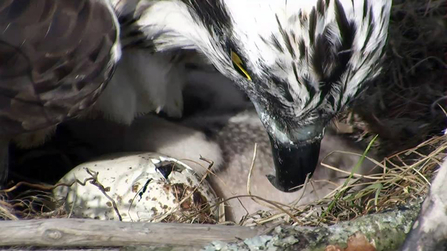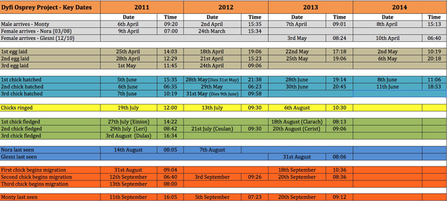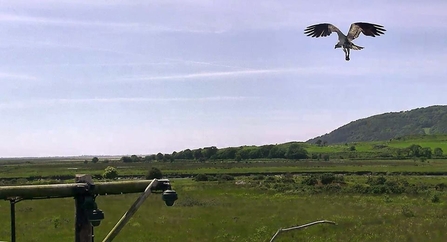On June 11th, three days and eight hours after the first chick hatched, the second did.
Two Bobs and a Twaite

© MWT
Here's the magic moment:
Here is the up to date schedule of all the key time events to date:

Here are the two 'bobbleheads' at six and three days old respectfully, the eldest on the right.

© MWT
At around 5am on Sunday morning (June 15th), Monty caught a rare species of fish - a Twaite Shad, or ‘Gwangen’ in Welsh.
Twaite Shad numbers are massively reduced in Britain compared to a few decades ago. They have not been a food fish in Britain since the 1800s and pollution has played a major part in their decline.
Today twaite shad are absent from many areas where they were once abundant. In many major European rivers such as the Rhine, Elbe and Thames the twaite shad is now officially classified as extinct.
Spawning stocks of twaite shad are known to occur in only four rivers in the UK, all in Wales (Severn, Tywi, Usk and Wye). This species returns from the sea to spawn in spring, usually between April and June, hence the alternative name of ‘May fish’.
We are pretty excited that we have, sorry Monty has, discovered this fish in the Dyfi. It means that the clean water requirements of this fish are present in the Dyfi and that it is probably breeding here - a great environmental success story if correct. We will pass this video on to the Fisheries agency and let them know.
Due to the rarity of this species the twaite shad is subject to substantial legal protection. It is illegal to kill, injure or take a shad from the sea without a license under Section 5 of the Wildlife and Countryside Act (1981).
Here’s the moment Monty brought the twaite shad to the nest:
Both chicks are doing great and are just in transition phase at the moment between the cuddly downy stage and the reptilian like dinosaur stage.

© MWT
Blue 24 is still around and causing some moderate disruption, but nothing too serious. We were hoping that the arrival of an intruder male on Monday would be the end of Blue 24’s period of being a singleton. It appears not though, he’s not been seen since.
It was hard to tell whether this male had leg rings, he didn’t land anywhere close, but he didn’t have a satellite tracker fitted.
Blue 24 - a determined osprey if ever there was one

© MWT
